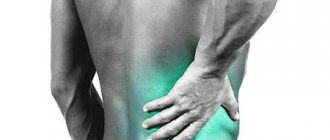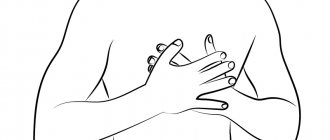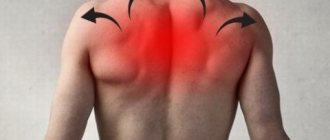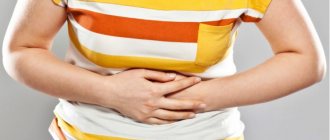Acute stomach pain is one of the most common symptoms, which indicates the presence of acute and chronic diseases of the gastrointestinal tract. To diagnose the disease, specialists determine the nature of the pain, its intensity, and the area of development of painful symptoms. Acute pain in the stomach is also caused by other factors, which representatives of the private medical clinic “KDS Clinic” will tell you about.
Acute pain in the stomach occurs not only with disorders of the gastrointestinal tract. With this symptom, problems with the kidneys, liver and other organs are diagnosed. If the patient is bothered by acute pain in the stomach, the treatment method depends on the patient's condition. Experts resort to the following treatment options:
- Traditional methods;
- Drug treatment;
- Homeopathy;
- In advanced cases - surgical intervention.
What are the causes of constant stomach pain?
Constant pain in the stomach often indicates the presence of gastrointestinal disease. Therefore, the causes of pain may be:
- Pancreatitis. With pancreatitis, the patient feels a sharp pain in the upper abdomen. Pain syndromes intensify after eating.
- Cholecystitis,
- Duodenal ulcer,
- Gastritis. Pain appears on an empty stomach and after eating. The cause of gastritis is considered to be irritation of the mucous membrane.
- Food poisoning. Accompanied by nausea and vomiting, frustration, dizziness and headache.
- Stomach cancer. The patient experiences bloody vomiting, rapid weight loss, and bad breath.
Other causes of acute stomach pain:
- Wrong food intake. The appearance of cutting pain after eating is a typical phenomenon for those who eat junk food. If you eat improperly, a large amount of gastric juice is produced and the metabolism in the body is disrupted. You should avoid eating fatty foods, flour, sweets, and alcohol.
- Internal organ injuries.
- Physical exercise. Sports should be done after consulting a specialist.
- Allergy. With allergies, patients experience acute pain in the stomach.
- Infections. For infections of the gastrointestinal tract, the main symptom is acute pain in the stomach.
Specialists from the private medical clinic “KDS Clinic” added that the state of the gastrointestinal tract is affected by the emotional state of the patient, the presence of stress and stress on the nervous system. The systems of the human body are interconnected.
Treatment of stomach pain
To treat stomach pain, in most cases, taking medications is sufficient. Regardless of the diagnosis, the patient will have to follow a gentle diet. Eating is recommended every few hours in small portions. It is necessary to exclude all foods that can irritate the mucous membrane of the organ: fatty and sweet foods, alcohol and carbonated drinks, baked goods and sweets, sauces and spices.
Drug treatment may include several stages:
- antispasmodics and painkillers;
- sorbents;
- drugs to correct the acidity of gastric juice;
- antibiotics and others.
Surgical intervention is indicated for benign neoplasms that do not grow deep into the wall of the organ. Surgery may also be prescribed for gastric ulcers with the risk of perforation of its walls. Some structural anomalies of the organ also require surgical treatment if they interfere with the normal functioning of the digestive tract.
The Clinical Brain Institute specializes in the diagnosis and treatment of stomach pain. The clinic has the opportunity to undergo a full examination, consult with specialists of a wide and narrow profile, and receive an appointment for treatment. Therapy is carried out under the supervision of doctors until complete recovery.
Diagnosis of acute cutting pain in the stomach
If you are concerned about the above symptoms, we advise you to go to the clinic and undergo diagnostic tests. Diagnosis of acute pain in the stomach is as follows:
- Consultation with a gastroenterologist. Highly qualified doctors at the private medical clinic “KDS Clinic” will help you find out about your health status and diagnose the disease as soon as possible. After the doctor conducts an initial examination and palpation of the stomach, he will determine the nature, frequency and intensity of pain. It can be aching, cutting, dull and sharp. The diagnosis depends on the nature of the pain.
- Taking tests. Patients undergo a general analysis of blood, urine, and stool. Patients then undergo diagnostic examinations. The examination method depends on the patient's condition.
- Endoscopy. The examination method is the most accurate and allows you to diagnose stomach diseases
To diagnose the complete condition of the body and find out about the presence of other diseases, patients are referred for ultrasound diagnostics. You will undergo an ultrasound examination of the abdominal organs. In some cases, examinations are performed using contrast fluid.
Such procedures include computed tomography and magnetic resonance imaging. Computed tomography and magnetic resonance imaging are the most accurate examinations in modern medicine. You will be able to see changes in the body, learn about neoplasms and disorders.
In addition to acute pain, patients experience:
- sharp pain in the stomach;
- dull pain in the stomach;
- aching pain in the stomach.
Sharp pain in the stomach appears due to the production of gastric juice and irritation of the damaged gastric mucosa. Sometimes the disease develops into gastritis and duodenal ulcer.
Dull pain in the stomach occurs with chronic gastritis. The pain is nagging in nature and occurs after eating. When dull pain occurs, patients are diagnosed with duodenitis. Duodenitis is inflammation of the duodenal mucosa. Pathology manifests itself in all age categories. Acute and chronic duodenitis are classified.
Aching pain in the stomach occurs when bacteria appear in the body. These include infectious diseases. Aching pain is affected by an incorrectly formulated diet, consumption of harmful foods, and chronic gastritis. Pains of this nature appear during the day and at night.
Diagnostic methods
It is possible to understand the cause of stomach pain and determine the correct treatment tactics based on instrumental and laboratory studies. At the initial examination, the localization and nature of pain is determined by palpation, as well as the degree of its irradiation.
Next, a set of studies may be prescribed:
- Ultrasound - determines the condition of the organ wall;
- MRI, CT are more informative methods that are necessary if tumors are suspected;
- clinical and biochemical blood tests;
- urine and stool tests;
- probing of the stomach and duodenum with further examination of the contents (acidity is determined, microscopy and bacterial culture are performed).
Diagnosis begins with simpler methods that allow you to identify the most common stomach diseases. If necessary, additional studies are prescribed. The Clinical Institute of the Brain has all the conditions for conducting a comprehensive diagnosis of stomach pain.
We diagnose and treat acute stomach pain
Representatives of our medical clinic “KDS Clinic” diagnose the presence of diseases in the early stages. You will receive consultation during the initial examination and further treatment. Clinic experts will examine you and receive test results as soon as possible. You can find prices for all types of diagnostics on our official website.
The clinic regularly runs promotions for comprehensive examinations of all body systems. All detailed information is posted on the website of the private medical clinic “KDS Clinic”. We are located in Moscow, at Belozerskaya street 17-G. Be healthy!
Pathogenesis
Gastrospasm develops due to a disturbance in the motor activity of the stomach walls and is accompanied by severe pain. The activity disorder develops against the background of a decrease in the point of excitability, which is located in the nervous visceral system. At the same time, the tone of the vagus nerve increases.
Functional spasms and pain in the epigastric region occur most often in young people aged 20-35 years, which is explained by frequent stress and imbalanced nutrition. People in the older age group are diagnosed with chronic diseases of the digestive tract, which periodically provoke abdominal cramps during exacerbations.
Gastrospasm can occur in three forms:
- Total reduction. It occurs as a secondary symptom in cases of already identified pathology of the digestive tract or nervous system.
- Partial reduction. Most of the stomach takes part in the reflex spasm. An example is the two-cavity gastric form.
- Limited reduction. It is registered due to an unhealthy lifestyle, against the background of occupational intoxication and in chronic smokers. It is also observed in tuberculosis and gastrointestinal ulcers .
Abdominal cramps during pregnancy
Nagging pain in the lower abdomen in early pregnancy can be associated with hormonal changes, overstretching of the muscles of the anterior abdominal wall, flatulence and constipation . The cause of the pain syndrome may be an adhesive process after suffering from an inflammatory disease of the pelvic organs. It is recommended not to self-medicate, but to seek qualified medical help for the pathology of pregnant women.
Classification
Abdominal cramps can be:
- Physiological . They arise against the background of normal, natural processes occurring in the human body. Physiological spasms are not associated with pathological processes or diseases and do not require special treatment.
- Pathological . They arise against the background of problems associated with functional disorders of human organs and systems.
Abdominal muscle spasms are divided into:
- Clonic . There is an alternation of periods of muscle contraction and relaxation. Clonic spasm occurs in renal failure , uremia and intoxications of various etiologies.
- Tonic . Characterized by prolonged spasms and tension in the muscle corset. Tonic spasm is observed in osteochondrosis , a disorder in the autonomic nervous system, after prolonged static stress, as well as after traumatic injury.
Prognosis and prevention
To prevent the development of abdominal cramps, you must follow simple preventive measures:
- avoid stressful situations;
- observe the work and rest schedule;
- nutrition should be as balanced as possible;
- undergo a comprehensive examination annually;
- take medications only after a doctor’s prescription;
- take regular walks in the fresh air;
- monitor regular bowel movements;
- wear a special bandage during pregnancy;
- drink enough water.
Timely identification of the cause of spasm and competent therapy make the prognosis of the pathology favorable.
Causes of abdominal cramps
Reasons for which there may be cramps in the lower abdomen:
- Stagnation of feces . When stool is retained, heaviness in the abdomen and severe cramps appear.
- Inflammation of the appendix . The pain is localized in the umbilical region with a gradual shift to the right side.
- Strangulated hernia.
- Urolithiasis disease . When kidney stones move through the urinary tract, severe pain appears. Initially, the pain is localized in the lower back or side on the affected side. Further, the pain radiates to the perineum, suprapubic region and anterior abdominal wall.
- Inflammation of adhesive scars.
All of the above reasons are considered dangerous and require immediate specialized medical care.
Abdominal cramps can occur due to pathology of the gallbladder and hepatic system. Against the background of cholecystitis, bile stagnates in the gallbladder and ducts. The inflammatory process provokes muscles and adjacent tissues to contract. The abdomen can also cramp in case of cholelithiasis , which requires emergency surgical intervention when stones move through the ducts and become blocked.
Causes of stomach cramps:
- stomach ulcer;
- gastritis;
- eating rough, fatty or spicy foods (spasm occurs immediately after eating);
- prolonged stress, which provoked an increase in the acidity of gastric juice;
- alcohol abuse;
- poisoning;
- taking certain medications.
Causes of intestinal spasms:
- helminthiasis;
- colitis;
- adhesive intestinal obstruction ;
- coprolites;
- appendicitis.
Causes of abdominal cramps in women
Very often, menstruation in women is accompanied by severe abdominal cramps. The cause of cramps in the lower abdomen in women during menstruation lies in the intense contraction of the uterus. Loose stools and diarrhea are often observed. If pain appears in the suprapubic area and menstruation is delayed, it is recommended to conduct a pregnancy test. During early pregnancy, pain may be normal, but too intense, severe pain may indicate an incipient spontaneous miscarriage .
Symptoms of intestinal and stomach spasms
Abdominal cramps may be accompanied by other symptoms depending on the underlying cause of the discomfort. Patients always complain of severe pain, which can be constant or periodic. The pain can be localized in the lower abdomen, in the lateral region, in the solar plexus area.
Pain in the stomach area can be aching, cutting, sharp or dull. Symptoms of stomach spasms indicate a pathology of the gastric mucosa.
Patients with abdominal cramps also complain of:
- vomiting to the point of nausea;
- stool retention or, conversely, diarrhea , diarrhea;
- change in the color of urine and feces;
- increased body temperature;
- increased sweating ;
- labored breathing.
Severe cramps in the stomach can be accompanied by heartburn and dagger pains if the cause of the pathology is gastritis or peptic ulcer . Immediately after eating, discomfort and diarrhea may appear. Severe spasms can be cramping in nature.
Symptoms of intestinal spasm are characterized by cramping pain in the peri-umbilical, epigastric region, bowel dysfunction - diarrhea syndrome . Symptoms may indicate damage to the intestinal mucosa, which requires careful diagnosis.
Spasm of the rectal sphincter can be fleeting (2-10 seconds) or long-lasting, lasting up to several minutes. The pain occurs suddenly and is acute and intense. Spasm in the intestines can develop on a neurological basis or as a result of the pathology of traumatic injury. Rectal spasm can occur immediately after bowel movement; in this case, taking a hot bath or using antispasmodics is effective. Intestinal spasms require additional examination in the form of colonoscopy and anorectal monometry.








